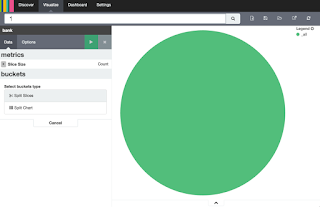<html>
<head>
<title>Angular JS Services</title>
</head>
<body>
<h2>AngularJS Sample Application</h2>
<div ng-app = "myApp" ng-controller = "CalcController">
<p>Enter speed (m/s) : <input type = "number" ng-model = "speed" /></p>
<p>Enter time (s) : <input type = "number" ng-model = "duration" /></p>
<button ng-click = "get_distance()">Hit for Result</button>
<p>The distance will be (m) : {{distance}} </p>
</div>
<script src = "http://ajax.googleapis.com/ajax/libs/angularjs/1.3.14/angular.min.js"></script>
<script>
angular.module("myApp", []);
angular.module("mainApp"),service('CalcService', function(){
this.get_distance = function(speed,duration) {
return speed * duration ;
}
});
angular.module("myApp").controller('CalcController', function($scope, CalcService) {
$scope.speed = 0;
$scope.duration = 0;
$scope.distance = 0;
$scope.get_distance = function() {
$scope.distance = CalcService.get_distance($scope.speed,$scope.duration);
}
});
</script>
</body>
</html>
The aims of this post is to transfer js code into separated files to have a clear separation by module: we will have put some links to js files within the HTML file in order to replace the js code .
<script src = "http://ajax.googleapis.com/ajax/libs/angularjs/1.3.14/angular.min.js"></script>
<script src="js/usingService/app.js"></script>
<script src="js/usingService/controllers.js"></script>
<script src="js/usingService/services.js"></script>
with the following files :
app.js :
angular.module('myApp', [
'myApp.services',
'myApp.controllers'
]);
controllers.js
angular.module('myApp.controllers', []).
controller('CalcController', function($scope,CalcService) {
$scope.speed= 0;
$scope.duration = 0;
$scope.distance = 0;
$scope.get_distance = function() {
$scope.distance = CalcService.get_distance($scope.speed,$scope.duration);
}
});
services.js
angular.module('myApp.services', [])
.service('CalcService', function(){
this.get_distance = function(speed,duration) {
return speed * duration;
}
});
Note:
- Another way to do it is to develop using the Angular Seed Project (it gives a great help for starting development offering a nice project structure with separated files) - see https://github.com/angular/angularseed/tree/69c9416c8407fd5806aab3c63916dfcf0522ecbc
- We could have use no trigger button :
<head>
<title>Angular JS Services</title>
<script src = "http://ajax.googleapis.com/ajax/libs/angularjs/1.3.14/angular.min.js"></script> </head>
<body>
<h2>AngularJS Sample Application</h2>
<div ng-app = "myApp" ng-controller = "CalcController">
<p>Enter speed (m/s) : <input type = "number" ng-model = "speed" /></p>
<p>Enter time (s) : <input type = "number" ng-model = "duration" /></p>
<p>The distance will be (m) : {{distance()}} </p>
</div>
<script>
angular.module("myApp", []);
angular.module("myApp").service('CalcService', function(){
this.get_distance = function(speed,duration) {
return speed * duration ;
}
});
angular.module("myApp").controller('CalcController', function($scope, CalcService) {
$scope.speed = 0;
$scope.duration = 0;
$scope.distance = function() {
return CalcService.get_distance($scope.speed,$scope.duration);
}
});
</script>
</body>
</html>
- Here, we decided to use the MVC pattern since that is the best way to organize any project development; however, for such a simple case, we should better use the MVVM pattern : this consists on deleting the script part and replacing {{distance()}} by {{time * duration }} (no controller in such case!!)
- Use PacalCase for the names of controllers, and camelCase for the application module 's name















